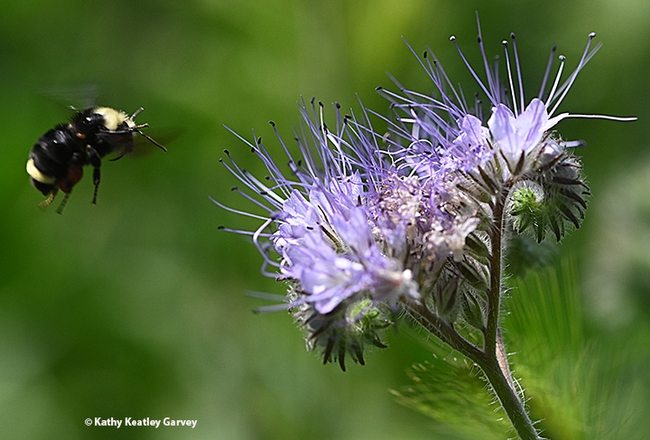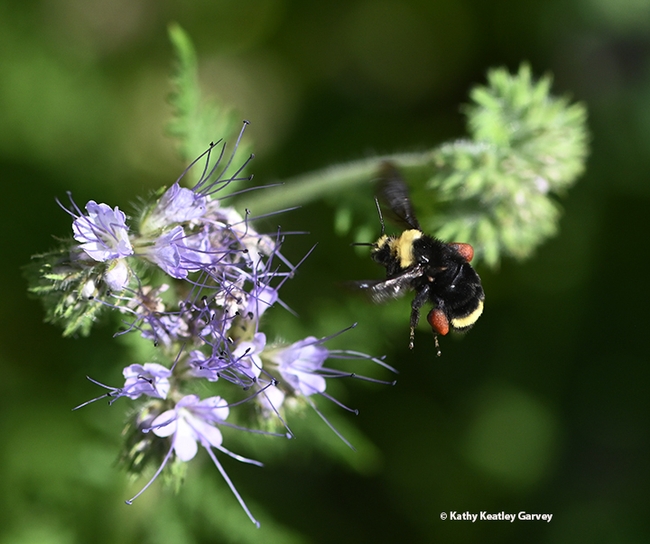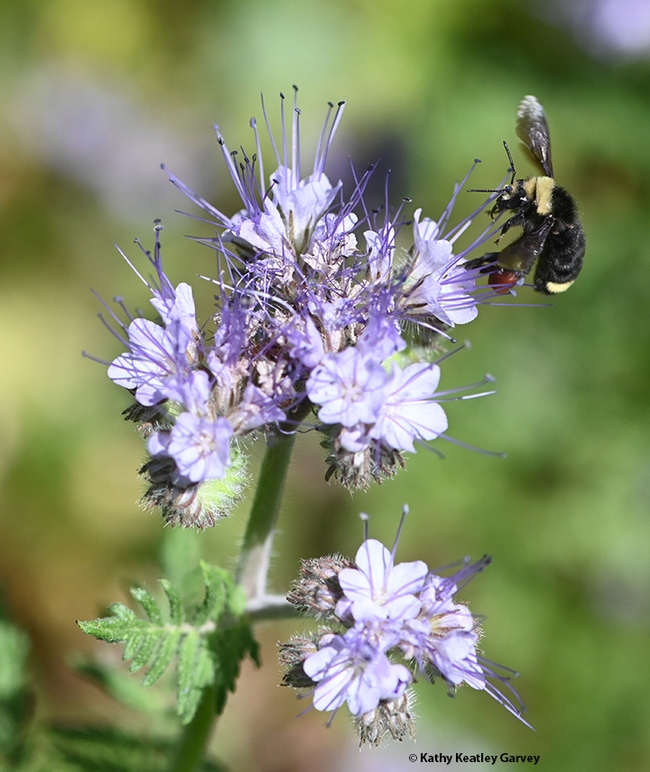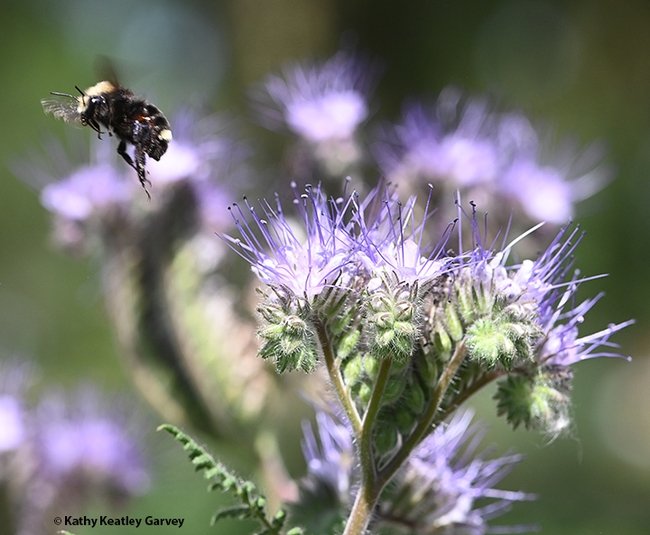Ever watched a bumble bee ballet?
Bumble bees may look clumsy in flight, but they get the job done.
We recently marveled at the yellow-faced bumble bees, Bombus vosnesenskii, foraging on lacy phacelia, Phacelia tanacetifolia, on the UC Davis campus.
This is a native bumble bee and a native plant.
Bumble bees do love Phacelia (think of Cecelia when you're pronouncing it--and there's probably a Cecelia out there who loves Phacelia as much as bumble bees do.)
B. vosnesenskii is native to the west coast of North America, and its range spans from British Columbia to Baja California. "The genus name Bombus--the bumblebee--comes from the Latin word which means a buzzing or humming sound, according to Wikipedia. "There are 250 species split into 38 subgenera within the genus Bombus."
Phacelia, a species in the borage family, Boraginaceae, is native to the southwestern United States and northern Mexico. In Greek, its name means means "bundle," in reference to its clustered flowers, according to Wikipedia, while tanacetifolia means "with leaves resembling those of Tanacetum."
Plant Phacelia and you'll be graced with bumble bee ballets. No ballet lessons required.
Attached Images:

A yellow-faced bumble bees, Bombus vosnesenskii, heads for Phacelia. (Photo by Kathy Keatley Garvey)

Packing red pollen, this yellow-faced bumble bee targets another Phacelia blossom. (Photo by Kathy Keatley Garvey)

Buzzing and never missing a beat, this bumble bee is a study in movement. (Photo by Kathy Keatley Garvey)

A bumble bee ballet ends where another one begins. (Photo by Kathy Keatley Garvey)